We Asked A Makeup Artist To Demo The Best Ways To Use Color-Correcting Makeup
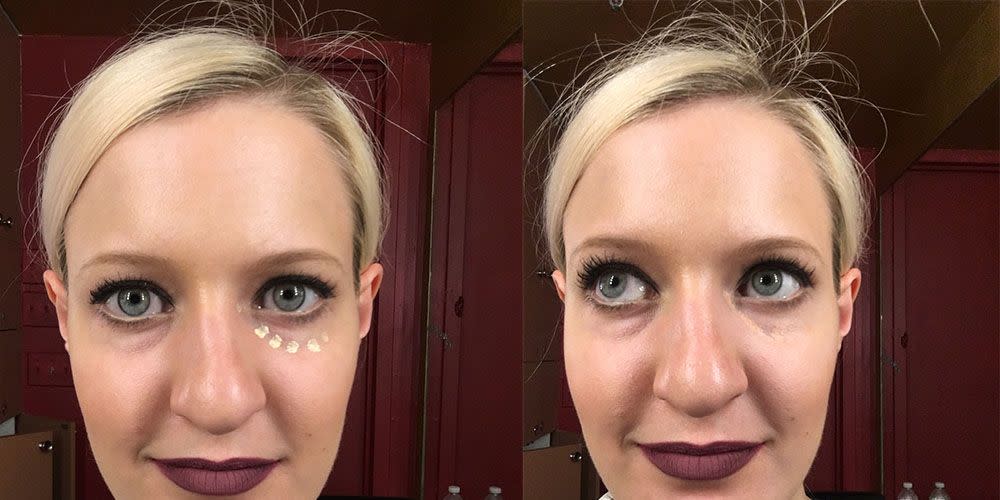
During a skin-mergency, there’s nothing more reliable than our trusty concealer. It defends us against the angry zits, dark under-eye circles, and unwanted redness that plague our complexions. But if you’ve strolled down a makeup aisle recently, there’s a new batch of skin perfecters on the block: the color correctors. Think of them as concealer's more vibrant cousins. At first glance these brightly-hued creams look like they belong in an arts-and-crafts store rather than a Sephora, but they are actually a secret weapon when it comes to looking totally flawless.
Before you go out and grab whichever shade is the prettiest, let makeup artist Shara Strand explain the difference between the hues and demonstrate the best ways to use them at home on her assistant.
Green
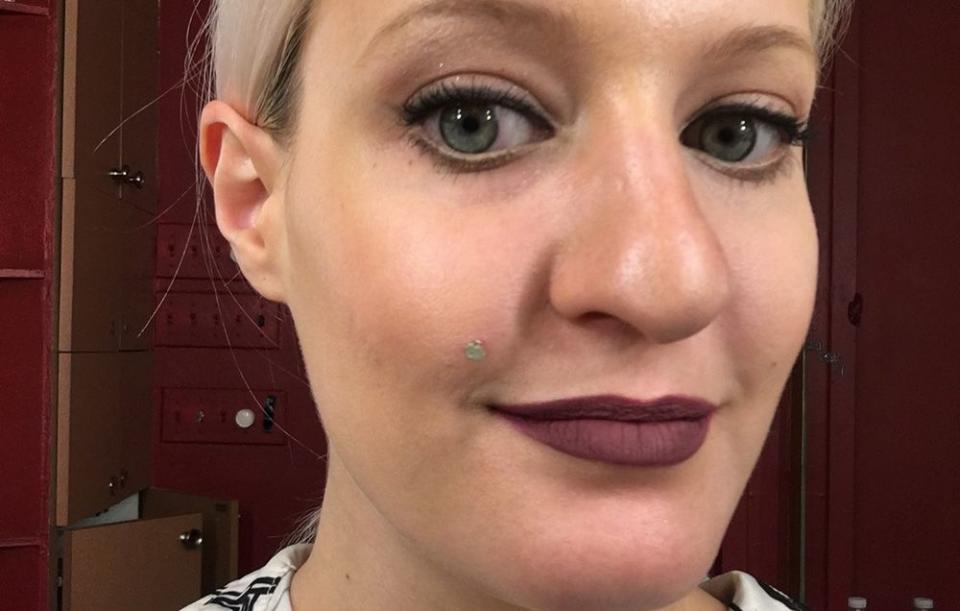
A pale or key lime green is used to fight redness—whether it’s from a pimple, broken capillary or rosacea. “For the best results, use the color corrector first then concealer right after,” explains Strand.
Try: Maybelline New York Master Camo Color Correcting Pen in Green ($10, ulta.com)
Related: This Primer Lets Me Leave The House Without Any Makeup
Purple
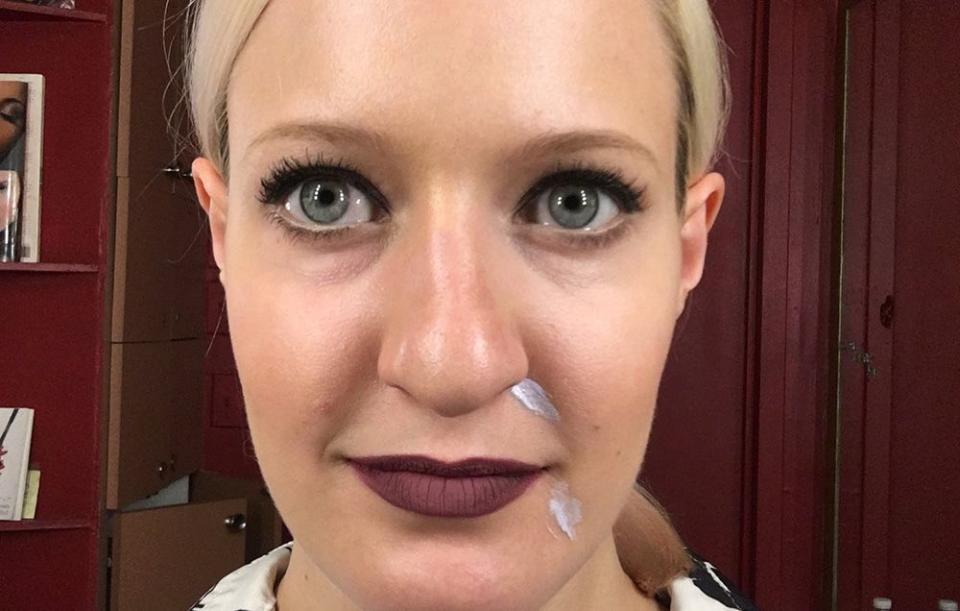
If your skin is looking dull, yellow, or sallow, a light purple can help brighten up this discoloration. Strand says she commonly uses it to brighten up spots around the mouth or near the eyes. “Lightly build layers for the most natural look—you don’t want a color cast left behind from the corrector,” says Strand—especially with a more noticeable hue like lilac. It's not always necessary to add foundation on top, but if you feel like you can still see a little violet left behind after applying, you can lightly apply some on top.
Try: Nyx Concealer Jar in Lavender ($5, ulta.com)
Learn how to contour your face in two easy steps:
Yellow
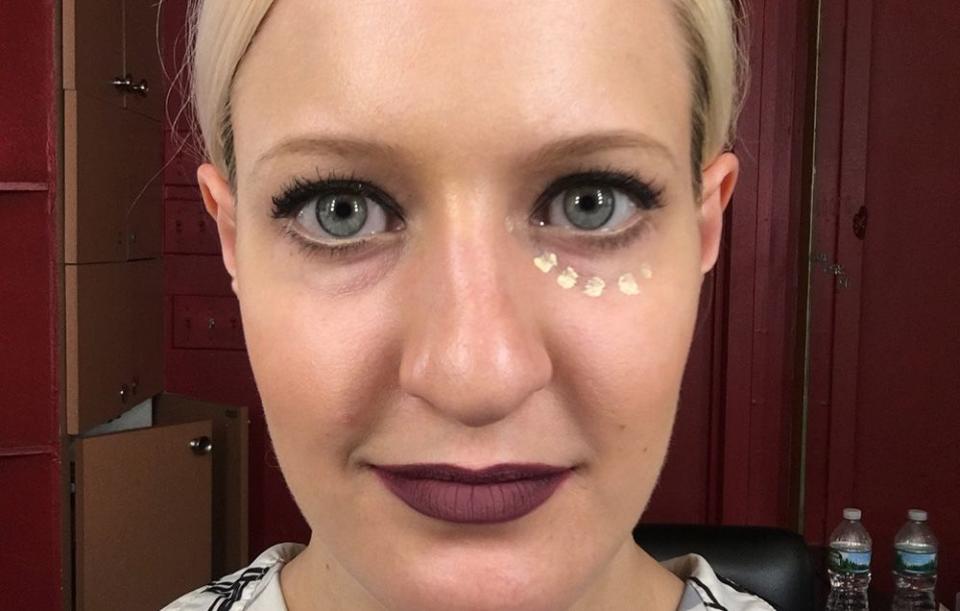
It counteracts purple. Think: Those not so cute under eye bags after you stayed up late binge watching Game of Thrones or unsightly veins. Try to apply it just on the dark areas, before buffing it into skin and covering with foundation or concealer.
Try: Ulta Color Correcting Liquid Concealer in Yellow ($9, ulta.com)
Related: Exactly What To Do About Those Dark Spots On Your Face
Peach and Orange
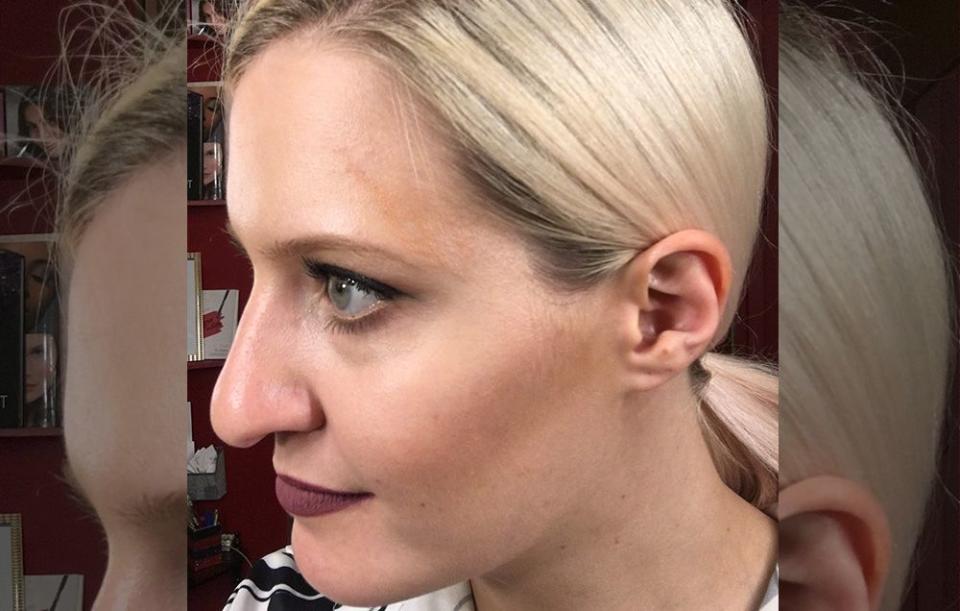
Correct darker tones (like acne scars or age spots) in lighter skin tones with a peach. You can also mix it with another corrector. “I often mix it with the yellow around the eyes to create a nice, well-rested effect,” says Strand. For deeper skin tones, reach for a darker orange instead of peach. Red formulations work as well—and in a pinch you can always use to touch of lipstick like this YouTuber.
Strand recommends applying a bit of concealer in your skin tone on top of the color corrector, then setting it with a loose translucent powder. "This makes it stay longer, and look more natural," she says.
Try: Urban Decay Naked Skin Color Correcting Fluid in Peach ($29, sephora.com) or Lancôme Teint Idole Ultra Wear Camouflage Color Corrector in Orange/Red ($31, sephora.com)
You Might Also Like

